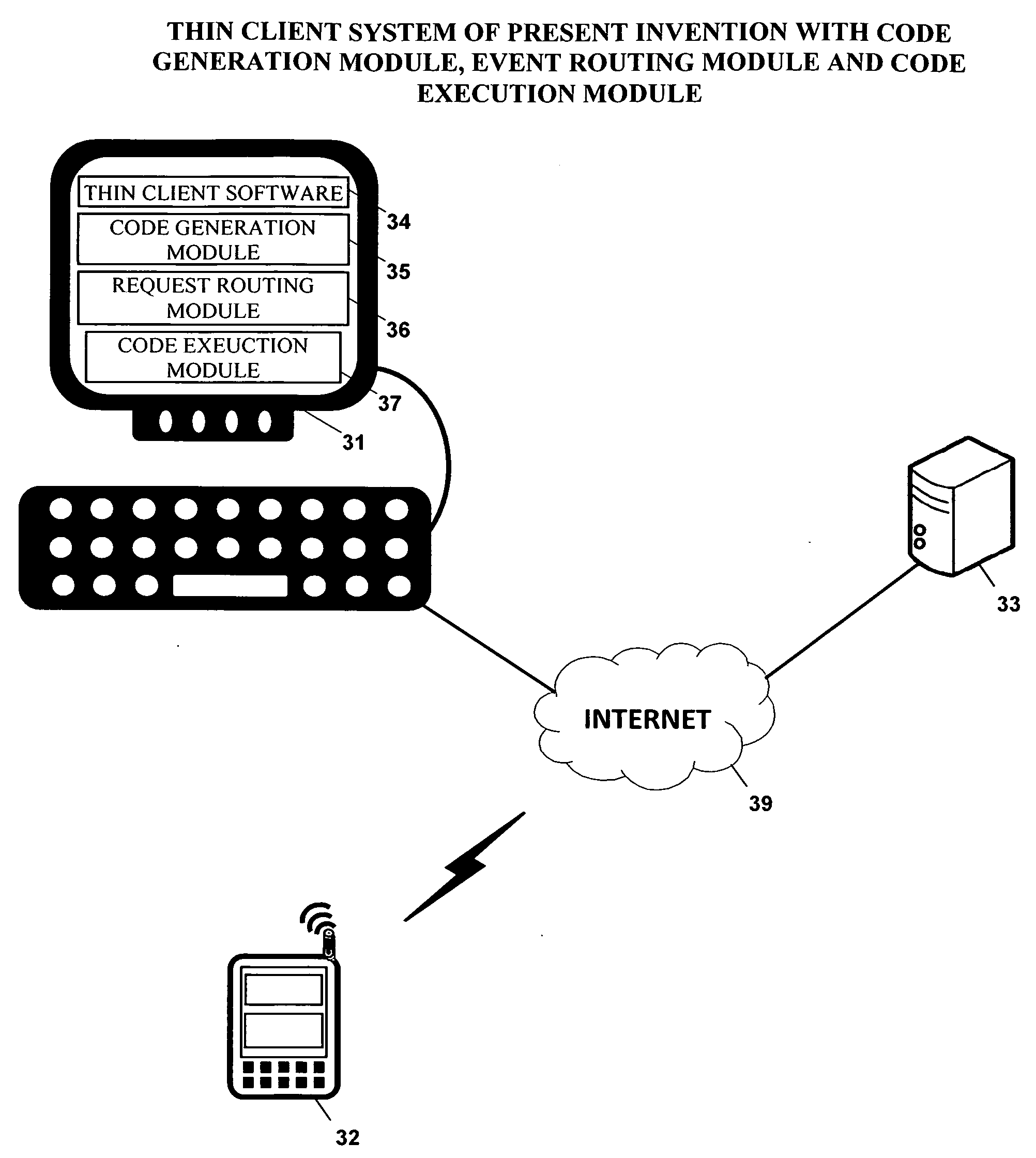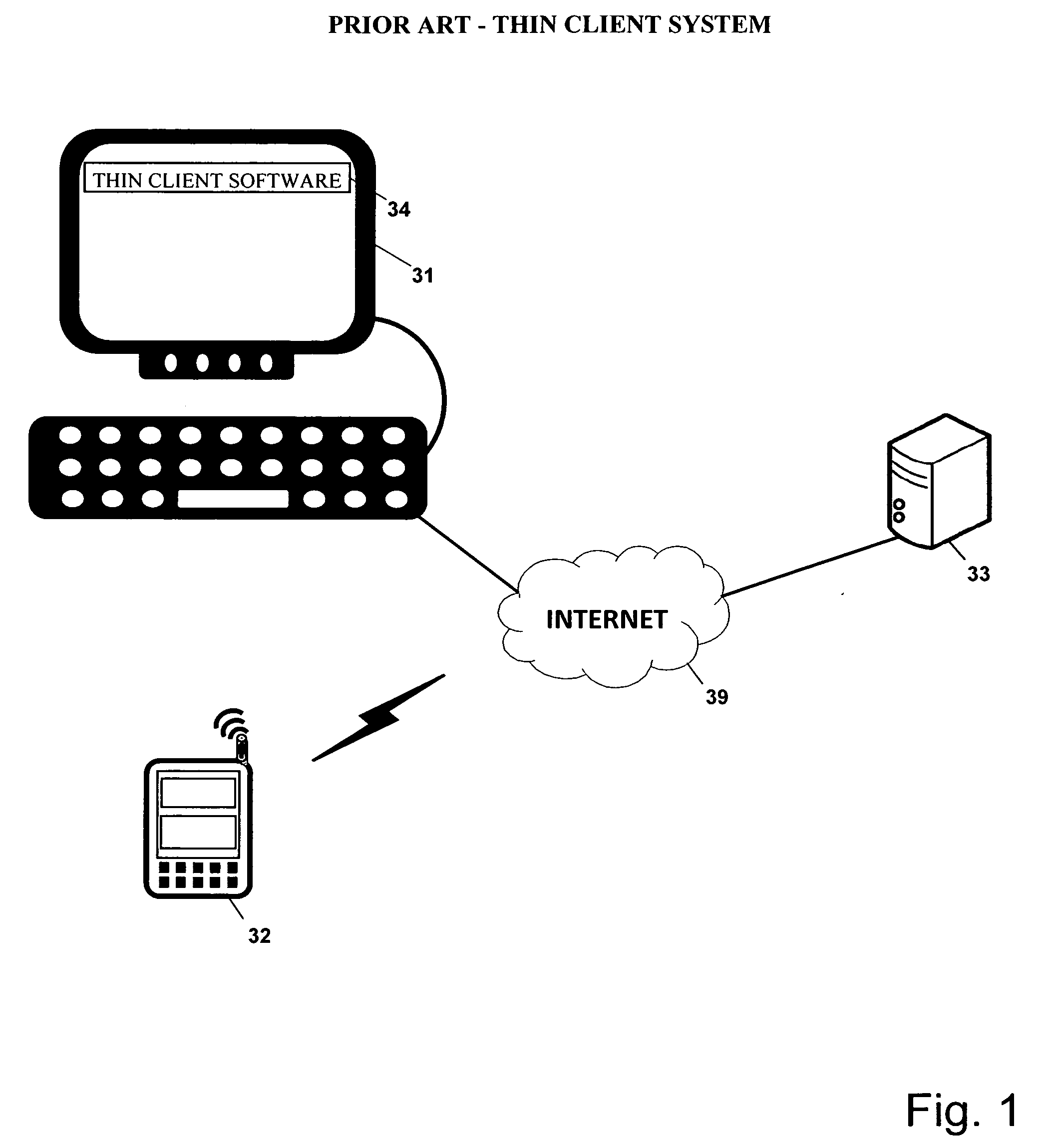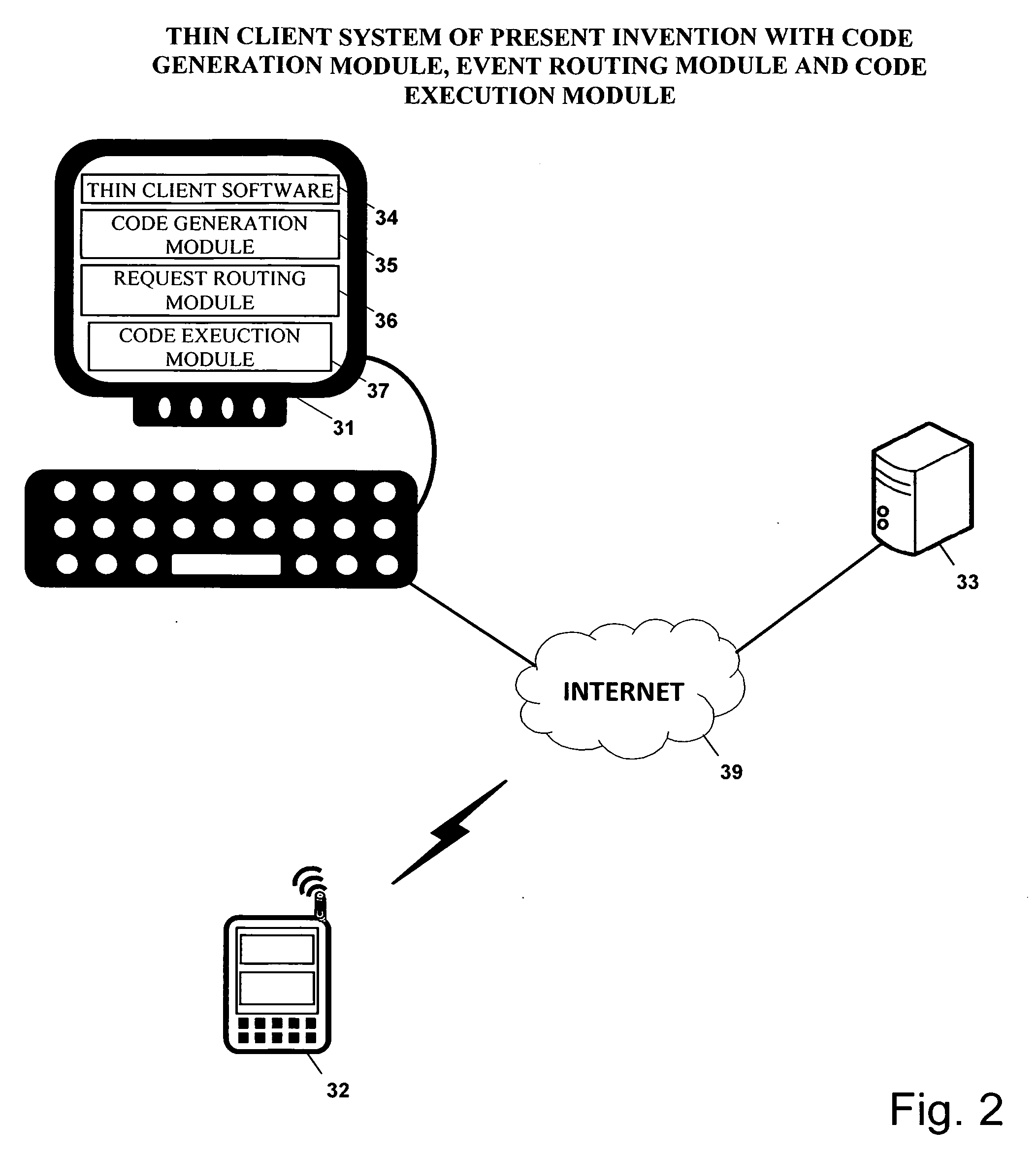Thin client system with round trip reduction using client side code generation
a client system and client side technology, applied in the field of thin client systems, can solve the problems of excessive bandwidth usage, system unusability for interactive applications, and software engineered for low latency networks cannot be effectively used in high latency networks
- Summary
- Abstract
- Description
- Claims
- Application Information
AI Technical Summary
Benefits of technology
Problems solved by technology
Method used
Image
Examples
Embodiment Construction
[0076]In the following description, thin client system of present invention is described. First a comparison between prior art thin client system and thin client system of present invention is described and then details of the method and modules of thin client system of present invention are described.
[0077]FIG. 1 shows a prior art thin client system where the thin client is capable of only rendering graphics output of software applications executing at the server. Here thin client machine is shown as a desktop based thin client machine 31 and a mobile device based thin client 32 machine. It can be seen that in this system each user input request has to be transferred to application server 33 and hence encountering latency and bandwidth issues.
[0078]FIG. 2 shows a thin client system of present invention. Here thin client machine is shown as desktop based thin client machine 31 and a mobile device based thin client 32 machine. Each of these machines, execute thin client software 34. ...
PUM
 Login to view more
Login to view more Abstract
Description
Claims
Application Information
 Login to view more
Login to view more - R&D Engineer
- R&D Manager
- IP Professional
- Industry Leading Data Capabilities
- Powerful AI technology
- Patent DNA Extraction
Browse by: Latest US Patents, China's latest patents, Technical Efficacy Thesaurus, Application Domain, Technology Topic.
© 2024 PatSnap. All rights reserved.Legal|Privacy policy|Modern Slavery Act Transparency Statement|Sitemap



